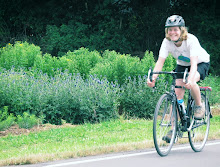[This post is from two weeks ago, when I set off for Bangalore Bangalore
The journey from Sirsi to Bangalore
The only unnerving part of the trip was the “rest stop” at 2 AM– most of the travelers were men, forcing me and my full bladder to dash across the darkened highway alone, flashlight in hand, to find a bush, all the time trying not to imagine the many ways I might die or, worse, miss the bus as it pulled away. In record time, I took care of business and climbed back into my bunk, none the worse for the wear.
When we reach Bangalore
Luckily, the conductor had assumed correctly that I would not recognize my stop name when he called it out, and jabs a finger in my direction when I am to get off. I stumble down the aisle with my overstuffed backpack and Sunita is waiting just outside, as promised (she’s already been here in Bangalore
On the way, Sunita explains that NIAS stands for the National Institute of Advanced Studies, one of the more prestigious universities in the country. It was actually founded by the same man who created the Tata empire, India
On arrival, we are given one of the guest rooms that NAIS has set aside for conferences such as these. In the walled-off campus with security guards at the gates, I can almost pretend I’m back in Sirsi. The biggest difference is nobody stares at me here – they’re all used to foreigners.
At the elaborate breakfast provided, I meet Dr. Vanaja Ramprasad, the surprisingly approachable and grandmotherly director of Green Foundation, who has been dedicated to improving the livelihoods of farmers for decades. An hour later (only half an hour behind schedule!) the conference kicks off with a lecture by Devinda Sharma, a journalist and expert on genetically modified crops and agro-politics. I’ve been given the intern’s honor of taking notes for the next two days, but I would have been riveted anyway: this guy is pretty incensed about the state of agriculture and India
Most of Sharma’s talk relates to the WTO and its liberalization of international markets. Pre-WTO , India
Under the WTO, however, the balance began to shift. Heavily subsidized grains from the US
The result was predictable. As Sharma put it, “Importing food is importing unemployment.” Today, India is headed down a path to attain a similar socioeconomic profile to the US, where less than 1% of the population (and dropping) grow agricultural products and a farmer living in Iowa would starve if his local grocery store suddenly ran out of supplies (due to, say, a fuel shortage) because he’s surrounded by a thousand miles of inedible corn and soybeans. The only difference is, there are simply too many people and not enough land for this system to work in India
As Sharma and the other speakers at the seminar explained, organic farming is supposed to be the antidote to all this mess, but it lacks the government backing to really make it work. Commercial, “conventional” agriculture (using chemical inputs) is, of course, subsidized ever since the WTO arrived, which makes it very competitive in domestic and international markets. Organic farmers receive no such help. In fact, they have to pay for organic certification by often-sketchy certification boards, who in classic Indian style create a tangled network of bureaucratic procedures and paperwork. The farmers, on the other hand, are usually not the corporate-world dropouts who usually take up organic farming in the States. They’re simply trying to sell produce that has been grown the only way they’ve known how for centuries – without outside inputs and with minimal impact on the land.
Although I’ve been studying this stuff for a while, hearing it again and talking to the people who are running against these problems in real life left me feeling disheartened. The second day involved more group discussions with farmers and other interested parties, including one incident that was sort of the highlight for me: an organic farmers vs. biochemical company representative throwdown. This fellow actually had the gall to get up in front of the entire room of 100-some organic farmers and declare that organic food doesn’t taste as good as conventional. In true Indian fashion, he was quite straightforwardly told to shove it. We didn’t see him the rest of the conference.
Despite that happy episode, I left the conference feeling frustrated and a bit hopeless, not only because of what I’d heard, but also because of what I hadn’t heard – an actual solution or at least a plan. Sure, in our air-conditioned haven with meals provided every four hours, we’d come up with a list of “policy recommendations” for the Indian government. But after witnessing during the last few weeks the clumsiness of India
Next stop: Navadarshanam, a collective just outside Bangalore




No comments:
Post a Comment